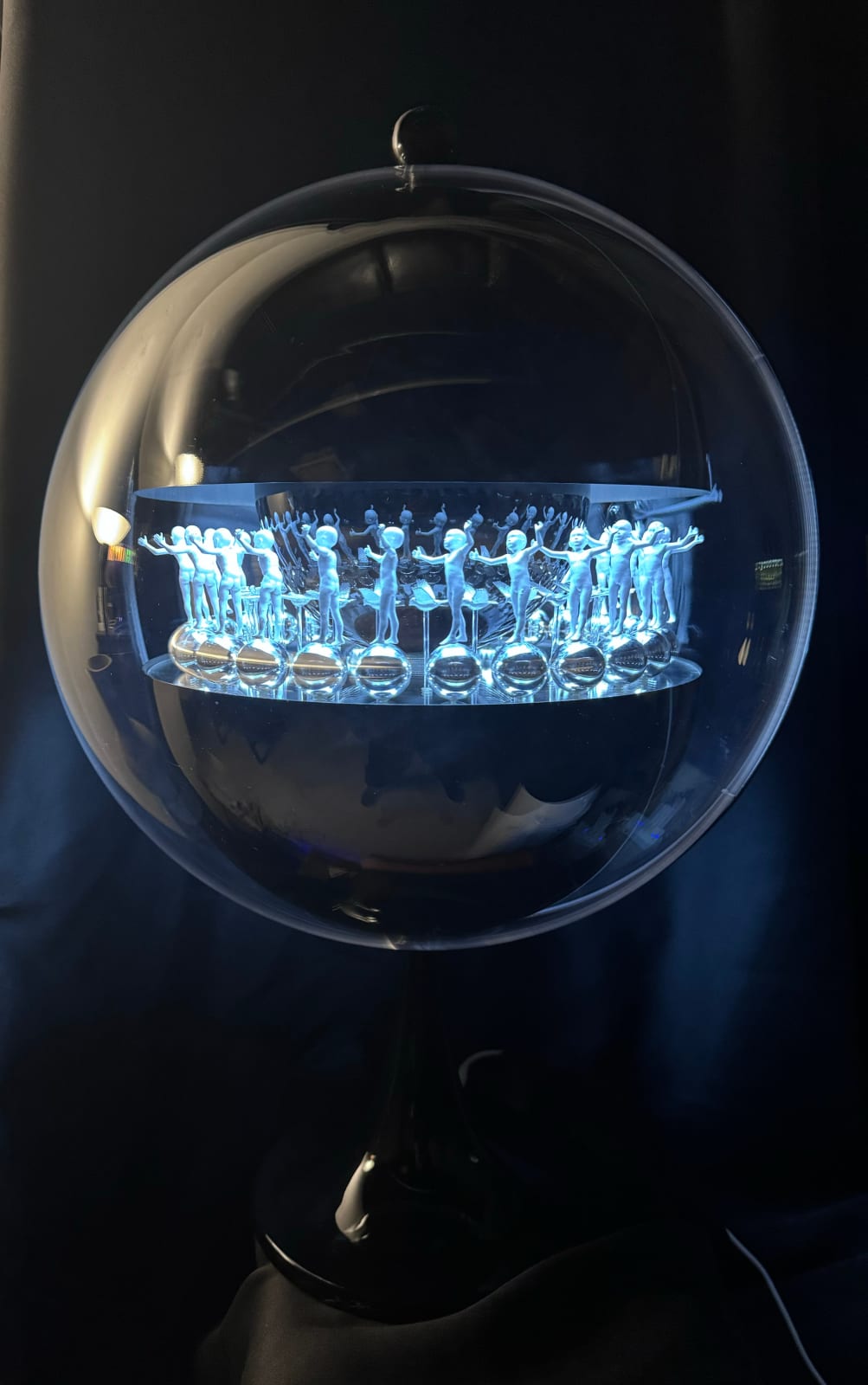
Xu Zhongmin
Egg shape E Black, 2024
Stainless steel, acrylic, aluminum disc, mechanical transmission, LED, PE resin, alloy
62 x 40 x 40 cm
© [Artist Name].
Although initially specialising in print-making, painting and sculpture, the artist, Xu Zhongmin, began experimenting with light and video projections onto solid objects after moving to London in 1992. On his...
Although initially specialising in print-making, painting and sculpture, the artist, Xu Zhongmin, began experimenting with light and video projections onto solid objects after moving to London in 1992. On his return to China in 2004, access to larger fabrication facilities enabled the building of large-scale kinetic art installations, such as The Bridge (2004). This industrially engineered machine presented a series of old men walking along a 12-metre-long metal bridge before disappearing. The unbroken line, mechanically replenished by new figures arriving from the other side, was a landmark piece of uncanny force and was immediately purchased by a Singaporean collector for a museum. While constructed as a mechanical loop fabricated in steel, stroboscopic lighting was critical to the illusion of this endless line of walking figures.
Xu’s latest Egg Series (2025) shows the results of decades of further research into kinematoscopic zoetropes with today’s miniaturised digital spheres enclosing a rotating carousel around which 3-d printed models parade under carefully controlled strobes. The simplest work shows a young baby striding purposefully round and round in an endless cycle, while those with flying birds make reference to the work of late 19th century ‘chronophotographers’ such as Étienne-Jules Marey and Eadweard Muybridge. More complex ideas are presented in the scenarios where Chinese dragons are fed golden balls, and in every sphere Xu makes precise use of internal reflections to animate each scene further. The differently coloured mannikins endlessly circulating through revolving Perspex doors are, perhaps, the most interesting, as internal reflections momentarily reveal glimpses of an inner figure turning round to walk in a counter-clockwise direction.
Although the term ‘zoetrope’ (“turning wheel of life”) derives from the American inventor William Ensign’s patented device, of 1865, similar optical effects of related devices were known to Leonardo DaVinci and others, having previously been described in early Greek scientific and ancient Chinese texts.
Xu’s latest Egg Series (2025) shows the results of decades of further research into kinematoscopic zoetropes with today’s miniaturised digital spheres enclosing a rotating carousel around which 3-d printed models parade under carefully controlled strobes. The simplest work shows a young baby striding purposefully round and round in an endless cycle, while those with flying birds make reference to the work of late 19th century ‘chronophotographers’ such as Étienne-Jules Marey and Eadweard Muybridge. More complex ideas are presented in the scenarios where Chinese dragons are fed golden balls, and in every sphere Xu makes precise use of internal reflections to animate each scene further. The differently coloured mannikins endlessly circulating through revolving Perspex doors are, perhaps, the most interesting, as internal reflections momentarily reveal glimpses of an inner figure turning round to walk in a counter-clockwise direction.
Although the term ‘zoetrope’ (“turning wheel of life”) derives from the American inventor William Ensign’s patented device, of 1865, similar optical effects of related devices were known to Leonardo DaVinci and others, having previously been described in early Greek scientific and ancient Chinese texts.